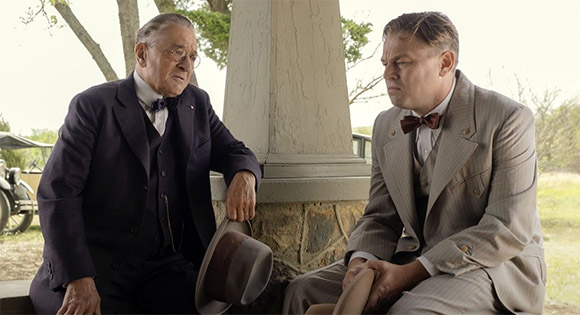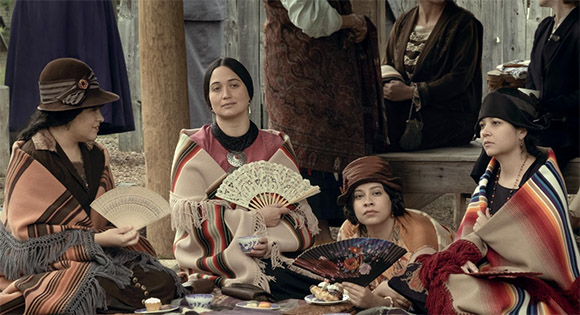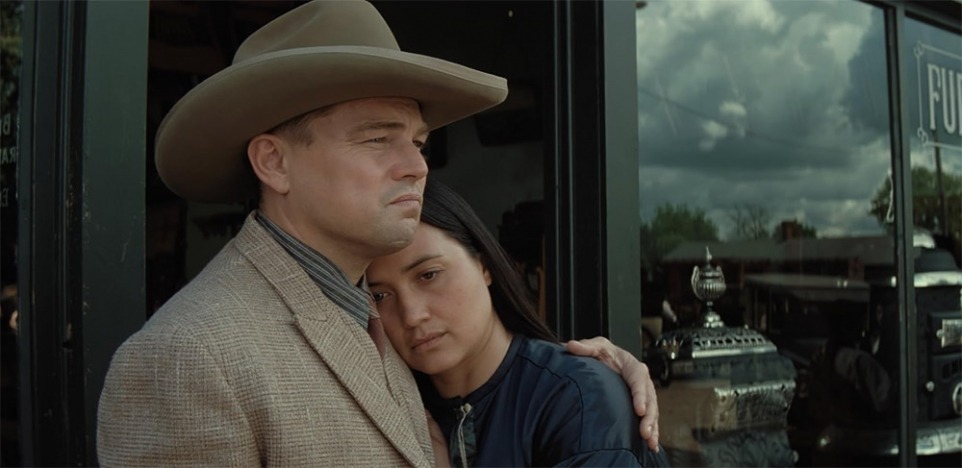Director Martin Scorsese is known for creating complex portraits of what makes his characters – and by extension, their society – tick. With a few exceptions, he has mostly given us films about mobsters, gang bosses, hustlers, and small-time crooks who are consumed with the quest for power and the money that comes with it. There are white collar criminals, sports stars, and celebrities whose antics have caught the attention of the public. When they appear to be heading to a downfall, they will quickly betray friends and family and resort to violence, including many forms of intimidation and even murder.
The personal motivations behind these characters’ behaviors are common ones: pride and greed. In some cases, Scorsese explores how individuals deal with the consequences of their behavior and even seek redemption. But often there is a larger story behind the front story of flawed men and women. They are seen to be reflective of society’s sins. In his latest film, Scorsese takes on the United States’ history of oppression of indigenous peoples, rampant racism, and white supremacy.
The film is based on the bestselling nonfiction book by David Grann, Killers of the Flower Moon: The Osage Murders and the Birth of the FBI. Scorsese wrote the screenplay with Eric Roth. The story is set in the 1920s after oil was discovered on the land where the Osage Nation had been forced to settle. The Osage became fabulously wealthy, leading authorities to set up a system whereby white “guardians” were assigned to oversee how money could be spent by the “incompetent” Indians. At the same time, white men were marrying Osage women, knowing that should anything happen to them, the husbands and children would inherit the oil rights. This pattern is confirmed when numerous Osage women are murdered. Law enforcement does not investigate.

The story opens as Ernest Burkhart (Leonardo DiCaprio) returns from World War I to his uncle’s cattle ranch in Indian territory. Going by the nickname “King,” William Hale (Robert De Niro) has no oil on his land but he has made inroads into the Osage community, learning the language, doing favors, and building community meeting places. He has plans for Ernest, who is neither very bright nor ambitious. He doesn’t like to work and he likes money. So King suggests that he befriend and marry Mollie Kyle (Lily Gladstone), an Osage whose family owns oil headrights. Standing in the way of Ernest’s claims to the family money are Mollie’s mother and three sisters. Her mother succumbs to a wasting sickness (diabetes which Mollie also suffers from). One sister dies of an illness, another is shot dead, and the third dies when her house is blown up.
Despite her own illness, Mollie travels to Washington to ask the President for help since local law enforcement has not stopped the murders. He sends Thomas Bruce White Sr. (Jesse Plemons) who with a team of assistants quickly assesses what is happening.

Throughout these events, Ernest tries to comfort and support Mollie. If Scorsese had decided to make a murder-mystery story from these true historical events, the film could have come in under the three-hours 26 minutes running time! But the director has chosen to also focus on the love story between Ernest and Mollie. Strong performances by DiCaprio and Gladstone convince us that there is something between these two beyond the desire to protect or obtain money. When Mollie gets sick and Ernest is assigned the task of giving her insulin, we find ourselves questioning what is behind his behavior. Is he just following his uncle’s orders or can he act on his own out of love?
There is no doubt about the motivations of King Hale and the other whites in town. They are determined to get the Osage money out of greed, and also because they are convinced that they deserve it. In one scene, a white man refuses to take on the job of killing someone until he learns the target is an Indian. Then his white supremacy overrides his qualms and his decency.
The spiritual practice of shadow encourages us to recognize those parts of ourselves that we find despicable, unworthy, or embarrassing – our greed, pride, anger, violence, and other “sins of the flesh.” The idea is that by looking closely at yourself, especially your flaws, you take responsibility for your actions, especially those with unfortunate outcomes. Everybody has a shadow side to their personality, and regularly doing shadow work is highly recommended. In our article on “Tips for Using Movies for Soulmaking” we suggest some ways to begin:
• Square off with the character in the film who is most unlike you, who is the "other." Embrace that character and see what you can learn from him or her.
• Be on the lookout for identifiable demons which hinder development and deflate the buoyant human spirit.
• When you are watching a movie, there are a lot of people there with you, especially those who live in you such as family, friends, teachers, lovers, enemies. Let them enter the dialogue about the film.
These are ways to work with your own shadow. A film like Killers of the Flower Moon enables you to go further. It puts on the screen examples of the shadow side of the United States, especially evident in its relationships with indigenous peoples. How do we today take responsibility for those actions?
